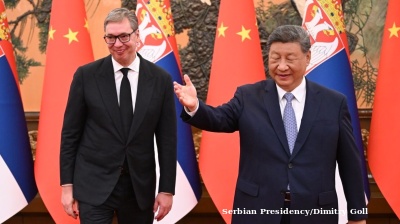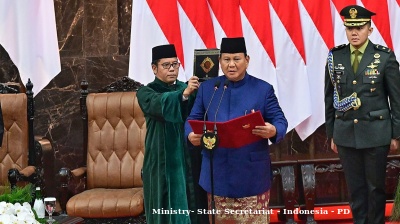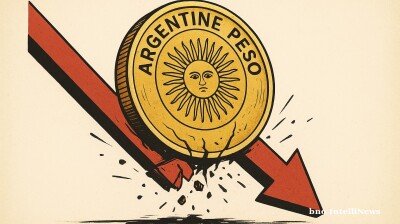Papua New Guinea (PNG) is intensifying its push towards renewable energy as it seeks to transform its electricity sector, improve energy access for rural communities, and meet growing demand in a sustainable manner. With international backing and a range of domestic initiatives, the country is positioning itself as a potential clean energy leader in the Pacific region.
Currently, only around 13% of Papua New Guinea’s population has reliable access to electricity, with the majority of rural communities dependent on diesel generators or without power altogether. Recognising the urgent need for change, the government has set an ambitious target of reaching 70% household electrification by 2030. Much of this expansion is expected to be powered by renewable sources.
Harnessing natural resources
PNG is naturally endowed with significant renewable energy potential. Hydropower remains the cornerstone of the country’s clean energy strategy, with abundant rivers providing the capacity for both large-scale and small-scale developments. Alongside this, the country is investing in solar energy, biomass, and, to a lesser extent, geothermal resources.
In recent years, several projects have highlighted the viability of renewables in even the most remote parts of the country. The Baime Hydropower Project in Morobe Province, commissioned in 2023, generates over 80 gigawatt-hours of electricity annually, reducing the need for diesel in nearby communities. Solar mini-grids and standalone systems have also been deployed in isolated areas, particularly on outer islands and in highland villages.
Global backing
Papua New Guinea’s renewable transition is being supported by a number of international development partners. In 2024, the World Bank approved a $204mn National Energy Access Transformation (NEAT) Project aimed at connecting over 400,000 people to electricity through a mix of grid upgrades, solar systems, and mini-grids. The project also includes funding for public-private partnerships to encourage investment in rural electrification.
Australia, PNG’s closest regional partner, has committed more than $150 million through the Australian Infrastructure Financing Facility for the Pacific (AIFFP). These funds are being used to modernise hydropower stations, expand solar access in remote provinces such as Milne Bay and West New Britain, and improve power infrastructure in urban centres.
Japan, through its Pacific Green Transformation programme, has supported solar installation at innovation hubs in Bougainville, while the European Union previously contributed to the development of renewable energy education and policy frameworks during the 2013–2017 Energy for the Pacific (EPIC) programme.
Additionally, the Global Green Growth Institute (GGGI), with funding from Korea’s KOICA, has launched renewable energy and green economy training programmes. These initiatives focus on equipping communities in Central Province with the skills needed to maintain solar and hydro systems and promote energy efficiency.
Policy and regulatory framework
To support this wave of investment, PNG has introduced a number of regulatory and strategic planning tools. The National Energy Policy (2017–2027) outlines the government’s clean energy priorities, while the recently established National Energy Authority has begun rolling out regulations for small power systems, paving the way for micro-grids and private operators.
The Climate Change (Management) Act and PNG Vision 2050 further anchor the country’s long-term commitment to a low-emissions development pathway. The government has also prioritised the creation of an investment-friendly environment to attract private sector partners, particularly in off-grid and mini-grid markets.
Local innovation, community solutions
In some cases, local innovation is leading the way. On Karkar Island, a community-driven project is producing biodiesel from coconuts to power schools, clinics, and local transportation. The initiative has proven to be both environmentally and economically sustainable, displacing thousands of litres of imported diesel each month.
Challenges and outlook
Despite notable progress, PNG still faces considerable challenges. The country's rugged terrain, dispersed population, and underdeveloped infrastructure make energy delivery costly and complex. Furthermore, financing gaps remain, with estimates suggesting a further $1.7 billion is needed to meet the 2030 electrification target.
However, with strong international backing, robust policy foundations, and growing momentum at the community level, Papua New Guinea’s renewable energy journey is firmly underway.
Features

Emerging market Tiger Cities power global growth prospects
Cities across the developing world are set to be among the fastest-growing urban economies in the next quarter century, according to Oxford Economics’ Global Cities Index 2025.

Hungary's Fidesz on the defensive after paedophile allegations against high-level government officials
Claims senior politicians could have shielded the director of Budapest-based juvenile correctional institution Szolo Street have the potential to become a "Hungarian Epstein case".

EU’s influence declines in its neighbourhood as China and Russia gain ground
Chinese presence growing in Western Balkans, while Russia makes gains in Turkey, shows new index developed by wiiw, Bertelsmann Stiftung and ECIPE.
_-_PD_1758849098.jpg)
Skull discovered in China may – or may not – rewrite human history
Questions are already being raised, with China having made at least half a dozen claims in recent years on much more recent historical issues that have little to no archaeological evidence to back them.




